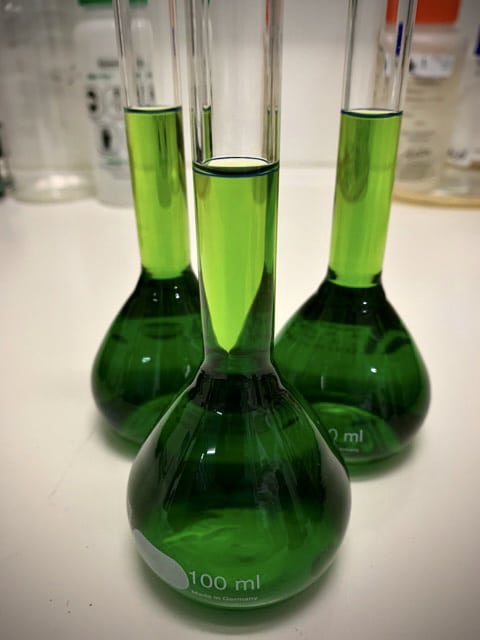Designing green and environmentally-sustainable extraction methods is one of the main goals in the area of applied chemistry, biology and technology. The purpose is to reduce the use of harmful solvents and solvent waste by optimizing the extraction procedure in order to have less of an impact on the environment and to reduce the intensity of the anthropogenic activities related to both analytical laboratories and industrial scale facilities. The aim is to protect both the environment and consumers by finding new solutions to generate co-products instead of waste and seeking to improve extraction methodologies.[1]
The extraction step is currently at the basis of various production processes in the pharmaceutical industry but also in the food, perfume, cosmetics, bio-fuel and fine chemistry industries. To extract natural products from a plant, for instance, extractions involve large amounts of solvents and laborious processes to isolate the final pure substance.
Greener Alternatives
The introduction of innovative, more environmentally-friendly and non-conventional techniques such as supercritical fluid extractions (SFE), microwave assisted extractions (MAE) and ultrasonic-assisted extractions (UAE), among others, may represent an alternative to common toxic solvents. [2][3]
Current regulations limit the use of hydrocarbon solvents: most of these are flammable, volatile, often toxic and responsible for the “greenhouse effect” and environmental pollution. Among bio-solvents, ethanol is the most widely used because of its easy production from fermenting sugar-rich materials and its biodegradability. Other green solvent alternatives to petrochemical substances are terpenes such as d-limonene used for the extraction of fats and oils. Vegetable oils derived from soya, cocoa or rapeseeds can also replace conventional solvents, presenting no emission of volatile organic compounds and comparable technical performances.
Glycerol and ionic liquids (ILs), are other green substances widely used in cosmetic and pharmaceutical industries to isolate natural products. Ionic liquids are an environmentally-sustainable option to extract flavonoids, polysaccharides, alkaloids etc. from plants. However, using them on a large scale is still debated because of their economic cost. [4]
Water’s Potential
Water makes it an interesting eco-sustainable alternative solvent for extractions: sub-critical water extraction — also called pressurized hot water extraction (PHWE) — permits to modulate the polarity of water and it is one of the most studied and promising green extraction methods to isolate proteins, sugars and organic acid as well as inorganic substances. The use of cyclodextrins in water solution is a recent innovative green option to improve the extraction efficiency of natural products by forming water soluble inclusion complexes with poorly water soluble compounds such as flavonoids. [5]
The green approach should always come first in the development and improvement of all the aspects of the many extraction processes as we attempt to preserve and protect the world from our own harmful activities.
References:
[1] Chemat, F. et al. (2012). Green Extraction of Natural Products: Concept and Principles. International Journal of Molecular Sciences, 13(7), 8615–8627. doi:10.3390/ijms13078615 [Journal impact factor = 5.924 ] [ Times cited = 1138]
[2] Belwal T. et al. Recent advances in scaling-up of non-conventional extraction techniques: learning from successes and failures. Trends in Analytical Chemistry, 115895. (2020) doi:10.1016/j.trac.2020.115895 [Journal Impact Factor = 9.801] [Times cited = 42]
[3] Moret S, Conchione C, Srbinovska A, Lucci P. Microwave-Based Technique for Fast and Reliable Extraction of Organic Contaminants from Food, with a Special Focus on Hydrocarbon Contaminants. Foods. 2019;8(10):503. Published 2019 Oct 16. doi:10.3390/foods8100503
[4] Xiao, J., Chen et al. (2018). Ionic Liquid Solutions as a Green Tool for the Extraction and Isolation of Natural Products. Molecules, 23(7), 1765. https://doi.org/10.3390/molecules23071765 [Journal Impact Factor = 4.411] [Times cited = 48]
[5] Feng, T., Liu et al. (2018). Associated-Extraction Efficiency of Six Cyclodextrins on Various Flavonoids in Puerariae Lobatae Radix. Molecules, 24(1), 93. https://doi.org/10.3390/molecules24010093 [Journal Impact Factor = 4.411] [Times cited = 10]
Image: extraction samples. Credit: Sabina Pulone












